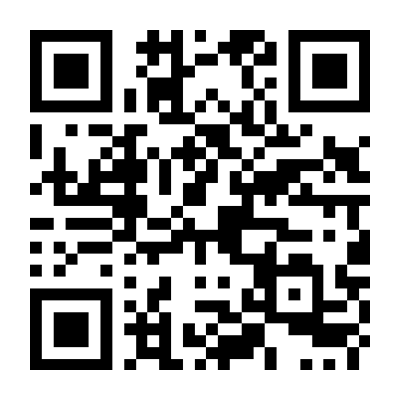单选题
2分
Text 3 Up until a few decades ago, our visions of the future were largely - though by no means unifo...
Text 3
Up until a few decades ago, our visions of the future were largely - though by no means uniformly - glowingly positive.Science and technology would cure all the ills of humanity, leading to lives of fulfillment and opportunity for all.
Now utopia has grown unfashionable, as we have gained a deeper appreciation of the range of threats facing us, from asteroid strike to epidemic flu and to climate change.You might even be tempted to assume that humanity has little future to look forward to.
But such gloominess is misplaced.The fossil record shows that many species have endured for millions of years - so why shouldn't we? Take a broader look at our species' place in the universe, and it becomes clear that we have an excellent chance of surviving for tens, if not hundreds, of thousands of years .Look up Homo sapiens in the "Red List" of threatened species of the International Union for the Conversation of Nature (IUCN) ,and you will read: "Listed as Least Concern as the species is very widely distributed, adaptable, currently increasing, and there are no major threats resulting in an overall population decline."
So what does our deep future hold? A growing number of researchers and organisations are now thinking seriously about that question.For example, the Long Now Foundation has its flagship project a medical clock that is designed to still be marking time thousands of years hence .
Perhaps willfully , it may be easier to think about such lengthy timescales than about the more immediate future.The potential evolution of today's technology, and its social consequences, is dazzlingly complicated, and it's perhaps best left to science fiction writers and futurologists to explore the many possibilities we can envisage.That's one reason why we have launched Arc, a new publication dedicated to the near future.
But take a longer view and there is a surprising amount that we can say with considerable assurance.As so often, the past holds the key to the future: we have now identified enough of the long-term patterns shaping the history of the planet, and our species, to make evidence-based forecasts about the situations in which our descendants will find themselves.
This long perspective makes the pessimistic view of our prospects seem more likely to be a passing fad.To be sure, the future is not all rosy.But we are now knowledgeable enough to reduce many of the risks that threatened the existence of earlier humans, and to improve the lot of those to come.
33.Which of the following is true according to Paragraph 5?
Up until a few decades ago, our visions of the future were largely - though by no means uniformly - glowingly positive.Science and technology would cure all the ills of humanity, leading to lives of fulfillment and opportunity for all.
Now utopia has grown unfashionable, as we have gained a deeper appreciation of the range of threats facing us, from asteroid strike to epidemic flu and to climate change.You might even be tempted to assume that humanity has little future to look forward to.
But such gloominess is misplaced.The fossil record shows that many species have endured for millions of years - so why shouldn't we? Take a broader look at our species' place in the universe, and it becomes clear that we have an excellent chance of surviving for tens, if not hundreds, of thousands of years .Look up Homo sapiens in the "Red List" of threatened species of the International Union for the Conversation of Nature (IUCN) ,and you will read: "Listed as Least Concern as the species is very widely distributed, adaptable, currently increasing, and there are no major threats resulting in an overall population decline."
So what does our deep future hold? A growing number of researchers and organisations are now thinking seriously about that question.For example, the Long Now Foundation has its flagship project a medical clock that is designed to still be marking time thousands of years hence .
Perhaps willfully , it may be easier to think about such lengthy timescales than about the more immediate future.The potential evolution of today's technology, and its social consequences, is dazzlingly complicated, and it's perhaps best left to science fiction writers and futurologists to explore the many possibilities we can envisage.That's one reason why we have launched Arc, a new publication dedicated to the near future.
But take a longer view and there is a surprising amount that we can say with considerable assurance.As so often, the past holds the key to the future: we have now identified enough of the long-term patterns shaping the history of the planet, and our species, to make evidence-based forecasts about the situations in which our descendants will find themselves.
This long perspective makes the pessimistic view of our prospects seem more likely to be a passing fad.To be sure, the future is not all rosy.But we are now knowledgeable enough to reduce many of the risks that threatened the existence of earlier humans, and to improve the lot of those to come.
33.Which of the following is true according to Paragraph 5?
参考答案: D
参考解析: 推理判断
【解析】由本题的题干可以锁定本题的答案在文章的第五段。 该段首句为段落中心句,“与思考眼前的未来相比,对如此之长的时间跨度进行思考似乎更为容易”,反过来思考也就是说,眼前的未来更难思考,符合D选项含义“我们眼前的未来很难去设想”。B选项“Arc 帮助缩小了未来学研究的范围”,该选项在文中出现在该段的最后一句话“这就是为什么我们可以发行Arc这样一个致力于研究近期未来的全新出版物”,和题目含义有很大出入,故排除。C选项“技术为社会问题提供了解决方法”,段中并未提到。A选项“对科幻小说的兴趣与日俱增

 百度扫一扫练题
百度扫一扫练题
 关注千题库公众号
关注千题库公众号








